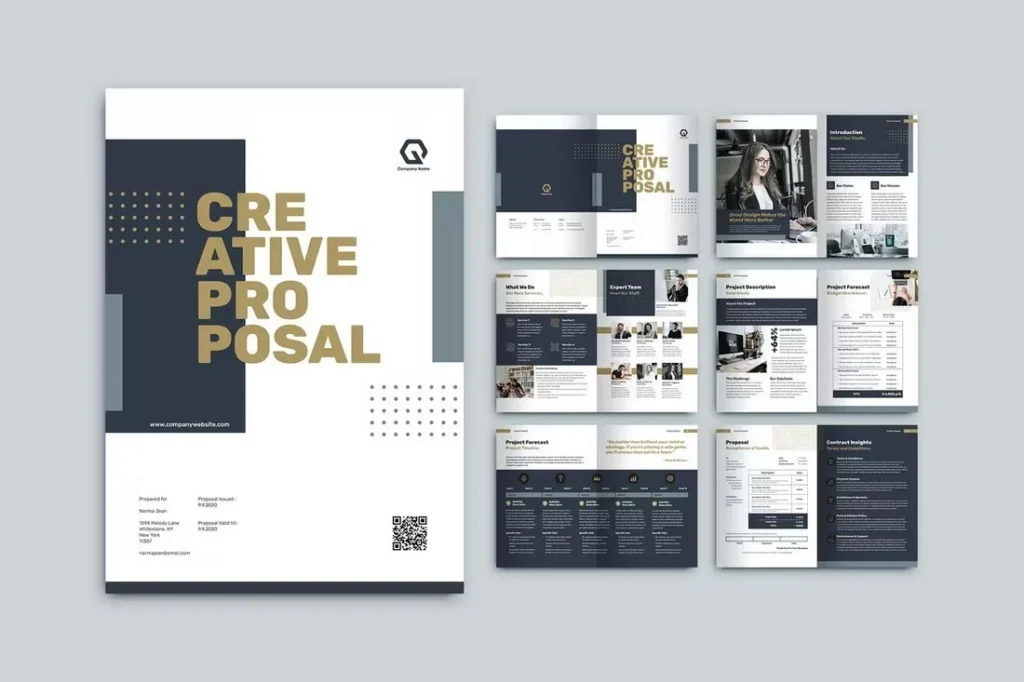Knowing what should be included in a request for proposal can be the determining factor in whether your project is seen as an exciting opportunity or an overwhelming endeavor for potential bidders. The key is to provide detailed and clear information that sets expectations and eases the decision-making process for vendors. Below, we outline the essential components of a standard request for proposal template.
Understanding the Importance of a Proposal Template
Alt Text: Two men are drafting a proposal on their laptops.
A request for proposal (RFP) template is a valuable tool in the procurement process. It serves as a formal document to solicit bids for a project or purchase from pre-selected vendors. With a comprehensive RFP, organizations can ensure they’re getting the best solutions and services at the most cost-effective prices.
The RFP provides your organization with a systematic way to solicit innovative ideas from various vendors and encourages competition. It simplifies the selection process by categorizing each proposal according to your predefined criteria. Thus, it serves as an equalizer by giving all prospective bidders a chance to compete fairly.
More so, an RFP offers the benefit of transparency, as it lays out all the project’s requirements, deadlines, and evaluation parameters. This way, vendors know the organization’s exact expectations and can tailor their proposals accordingly.
Essential Components To Cover in Your Proposal Template
The first key component of the RFP template is the introduction or project overview, which gives a summary preview of your project. Here, you can include the purpose of the RFP template, your organization’s background, project objectives, and other critical details that can give the bidders a grasp of the project.
Your RFP template should also contain a detailed scope of work. This section lays out the specific tasks, deliverables, and outcomes expected from the project. It sets the parameters for the project and gives vendors a gauge to measure their capacity.
Another critical component is the proposal submission guide. This outlines the stipulations for proposal submission, such as the proposal’s format, and submission timeline, as well as the contact person for questions or clarifications.
Last but not least, the RFP template should include the proposal evaluation criteria and the contract terms. Clearly outlining what you will be assessing in each proposal helps vendors strategize their bids. The contract terms set the legal groundwork for the potential working relationship.
Constructing a Clear Project Overview and Scope for Proposal
Creating a clear and extensive project overview and scope is central to an effective RFP template. It gives potential bidders a succinct understanding of your organization’s needs and expectations. The project overview should highlight the project’s goals, estimated timelines, and budget considerations.
In detailing the project scope, it is advisable to include the specific tasks, deliverables, and outcomes that each vendor should provide. This provides vendors with a comprehensive guide on the functions they would need to perform and the resources required to accomplish the tasks.
It’s vital to ensure that the project’s description and scope are clear, concise, and accessible to all potential bidders. This will enable prospective vendors to fully understand what is required and accurately estimate the resources needed to deliver the project successfully.
While constructing a project scope, it’s prudent to be exhaustive in detailing every aspect of the project. This way, you can avert misunderstandings and manage the vendor’s expectations effectively.
In conclusion, an effective RFP template is a fundamental tool that ensures an efficient procurement process, bringing you closer to finding the perfect fit for your project.

